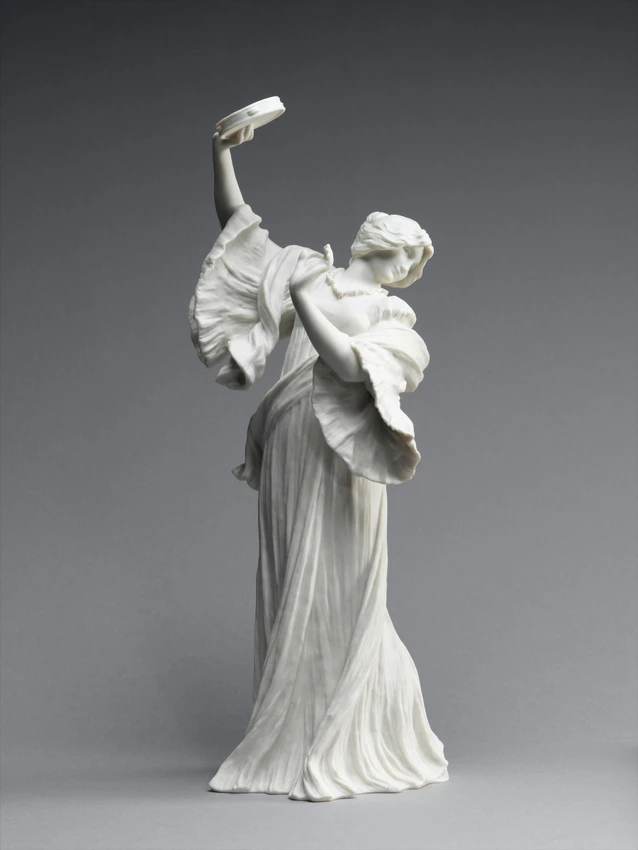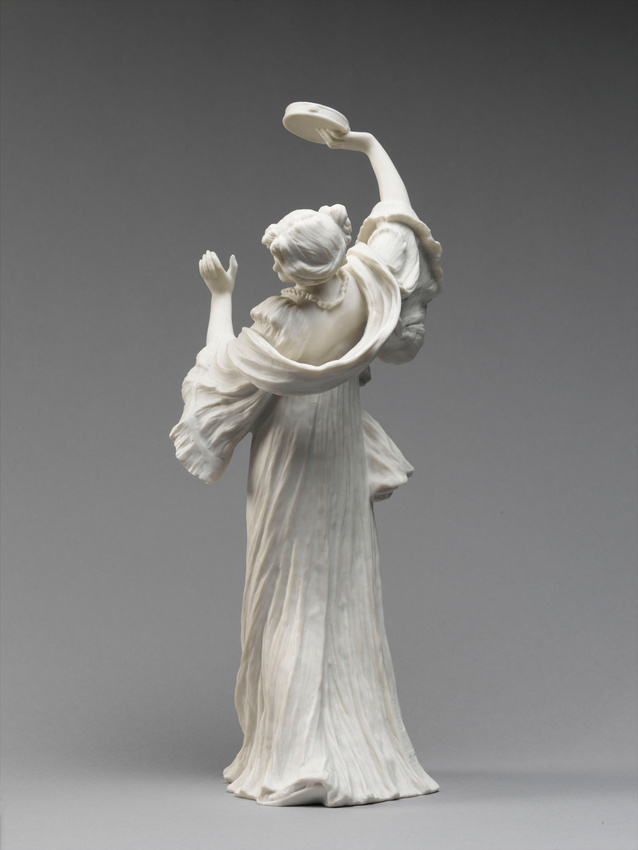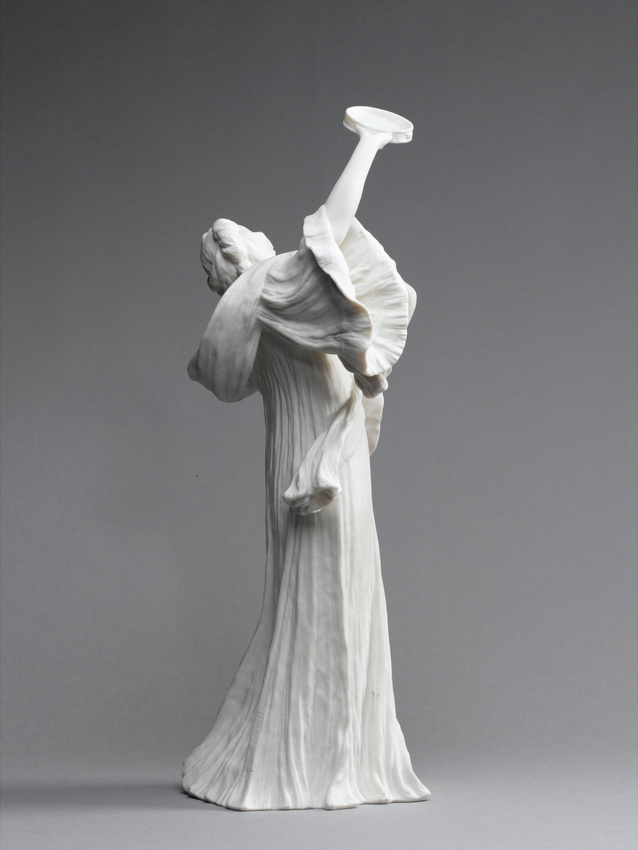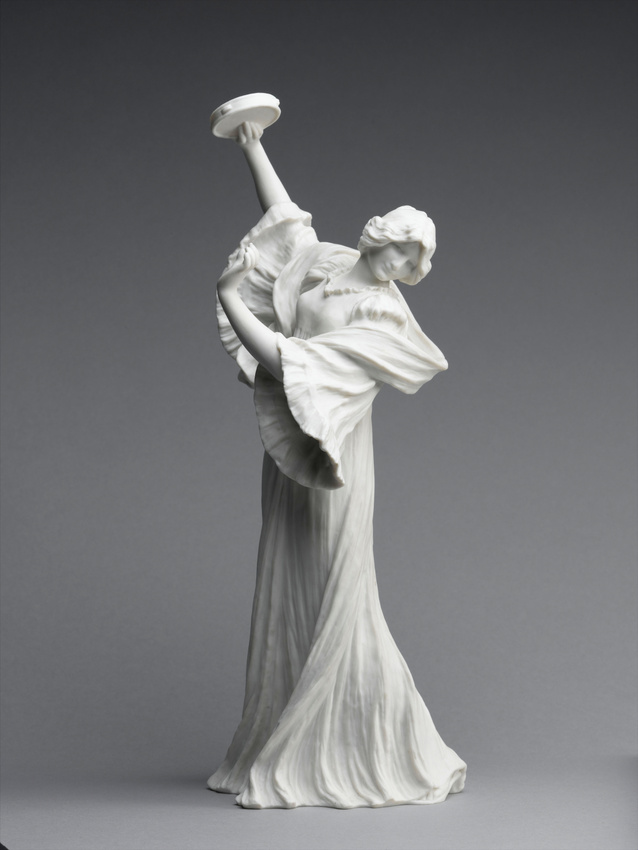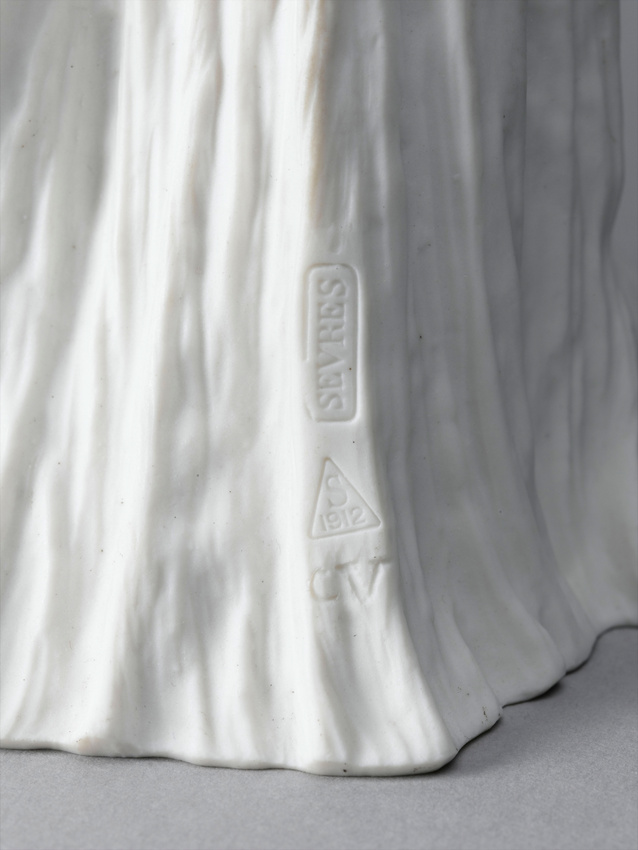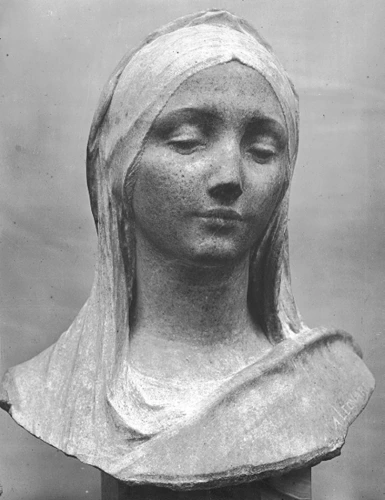Danseuse tambourin à droite
At the 1900 Universal Exhibition, the Sèvres Porcelain Factory created a sensation with a biscuit table centrepiece, comprised of fifteen statuettes dancing and playing with their veils. The technical prowess of these delicate, almost translucent folds in the drapery was made possible through the development of a new, hard china clay, of exceptional resistance. The novelty of the subject, the quality of the statuettes and their harmonious and dynamic composition, impressed the public. The model for this Dancer was taken from this table centrepiece.
From the time when Alexandre Sandier was appointed to the post of artistic director in 1896, the Factory began looking to revive its production. In 1897, at the Salon de la Société nationale des Beaux-arts (Fine Arts National Society's Exhibition), Sandier saw "Ten models depicting a dance with ‘scarves' and reliefs made of terracotta which prefigured the decoration of a ‘dance centre'. He contacted the artist, Agathon Léonard. He asked Léonard to modify and adapt his figures for a table centrepiece. This represented a significant break with the tradition of centrepieces from the 18th century and this choice introduced a new aesthetic where everything was flowing lines and arabesques. Today, this centrepiece The Scarf Dance, is considered emblematic of Art Nouveau.
Sèvres then produced each figure in two sizes. This one is the ‘second size'. We know from the Factory archives that 125 copies of the two different sizes were sold between 1901 and 1923. The continued success of these motifs is proof of the long-standing popularity of Art Nouveau, even when the movement was starting to show signs of fading in France from 1905 onwards.
